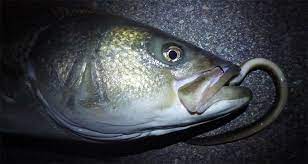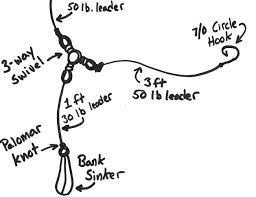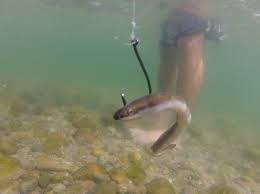Striped Bass Eel Fishing
Whether day or night fishing in summer for stripers, the eel is one of the best live baits. Eels can be fished either dead or alive and time and again produce large striped bass.

Most anglers prefer to use live eels, especially when fishing at night. On the other hand, dead eels have an aptitude for covering a bigger strike zone.
Eels are an effortless bait to swallow and can target larger fish. When targeting striped bass on live bait, anglers can use either conventional or spinning tackle. Various techniques are used for fishing eels to target stripers.
Eel Techniques for Striped Bass Fishing
Stripers are found on structures at the cape cod on the coastline of the Elizabeth islands to the flats of Brewster and the spread area in between. Eels are fatal bass bait and can be fished in many different ways.
With that said, make sure to use a system that matches different conditions, such as weather, area, and time. Here are some of the best tactics for live fishing eels;
- Casting eels
- Rumbling in the rips
- Shallow drifting
- Floaters
- Three-way rig
- Spinning rod and reel
- Braided and fused lines
Casting Live Eels
This technique can be used by casting eels from shore or a boat, along open beaches, in inlets, under rocks and back bays, and in shallow water where the bass is found.
Due to the wiggling and the enticing scent of a live eel, it’s more effective than using dangling plastics or wood.
Since the eel is retrieved slowly, to keep the line tight, use a rig containing a 7/0 circle hook and a 30-inch length and 50 pound50-pound leaders with a mini barrel swivel attached to the running line.
Rumbling In the Rips
Striper fish usually establish feeding places on the sand ridges, and running tides at the mouth of Delaware Bay at the cape may rip. Fish wait on both sides of the rip in calm water hiding behind the fishy structures.
With a rod of 1 to 4 ounces torpedo-shaped drift sinker and a 4 feet leader hook, drift the eel through the rough water. Drop the eel at 50 or more feet in the back of a drifting boat and let it approach the rip at a low angle dispensing the eel at the eye level of the bass.
Shallow Drifting
Eels can either be drifted or trolled on the suspended water columns under afloat. These can be done when drifting live eels works in relatively shallow waters and on certain underwater structures. Use plugs, keeping the reel in free spool and your thumb on the mainline.
While using a boat, when you locate bass, put the engine in neutral to control the prevailing drift, then motor back around the rocky areas and place it to drift over the structure trailing your eel close to the bottom where the big bass are clinging.
Since this technique requires you to fish in the spots where the bass is either feeding or holding. If the water is deeper than 20 feet, use plugging reels combined with a bank sinker above the barrel swivel.
Floaters
This technique requires a live eel to be dangled below a ballon, especially on the sticky structures. The balloon keeps the eel from swimming into the heavy rocky structures and laying on the bottom. Tie the balloon to the line to help it hold the eel at the bottom for the striper to see it.
Three-Way Swivel Rig

This technique is best used at night in heavy currents and deeper waters. A three-way reel enables you to use the needed weight to get the eel to the bottom of the structures.
Before dropping the eels, you should first search for the fish using a depth sounder and short drift the spot. Use heavy rods. Tie the rigs with a dropper line on the three-way allow swivels to a heavy sinker and a leader to the hook.
Braided and Fused Lines
The thin diameter of a braided line will allow the eel to dive deep quickly and stay deep. Most anglers leave them on a free reel causing the striper to grab the eel before putting the reel in the rod tip.
Braided lines are best used for catching smallmouth bass while using lines and rods that are heavier than 30 pounds.
How do You Hook a Live Eel?

While fishing with live eels for stripers, the best way is by using circle hooks, whether using spinning or conventional tackle. Eels are very slippery and hard to hold, so a rag or towel is useful when hooking this bait.
Catch the eel behind the head and set the hook from the bottom jaw and out of the eye to enable the head of the eel to point downwards. It also allows the hooked eel to swim freely and elude predatory fish.
Use large hooks and avoid using small eels, large fish are more drawn to the bigger eel. In addition, bigger eels move faster, causing more disturbance and making the predator fish more hostile. Also, use a large gauge hook when fishing with dead eels. Hook it on the nose to help you present more features of a rigged eel and reduce the work.
How do You Catch Live Eels?
Eels prefer to feed in water with a slow current like rivers, ponds, reservoirs, and canals. They feed on worms, nightcrawlers, minnows, and insects and are mostly active during hot and humid nights in summer.
When fishing for eels, choose an abrasive monofilament line and a medium power rod to withstand the thrashing and tugging of the eel. Also, place a split shot above the hook to increase the weight and help your line to the bottom.
To retrieve your eel quickly, use medium-capacity spinning reels. American eels are popular bait for fishing stripers. They mostly live in fresh or brackish water and only go to the sea to spawn.
Conclusion
The best places for catching stripers with live eels are drop-offs, rocky bottoms, boulder fields, and ledges. The big stripers rest during the day and come to the shoreline at night to look for bait.
In addition, eels are more active at night, making it an appropriate time for fishing. Also, the season to catch stripers with eels is summer, when night fishing is effective from July to October.
Finally, When fishing in a strong current or windy drifts, start the drift over the intended bottom. It will allow the eel to swim down the proper depth and be in the hitting zone.





Comments 1